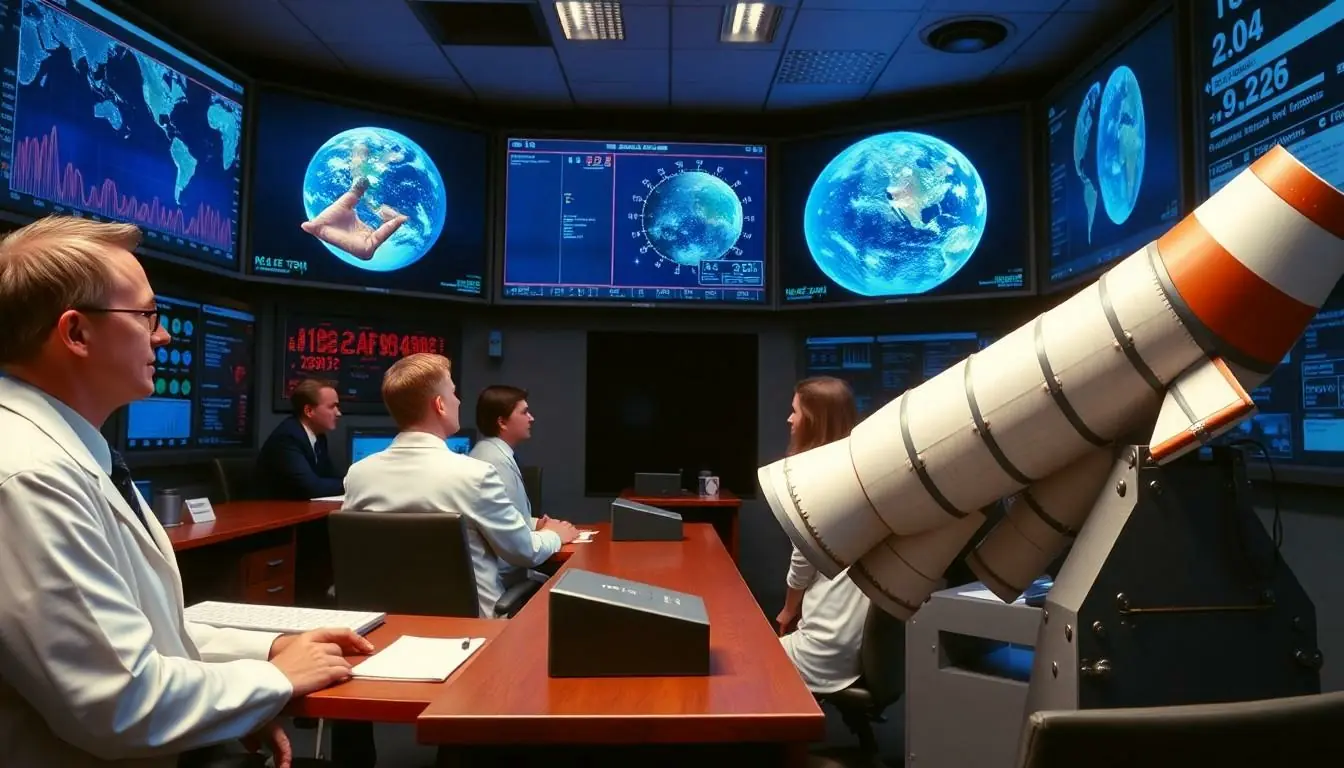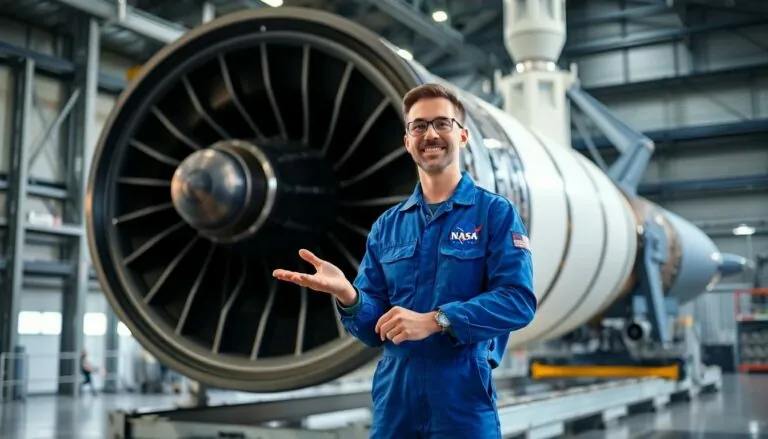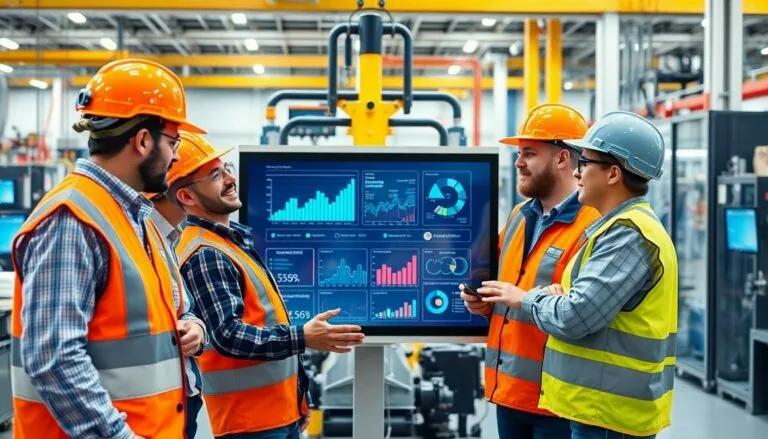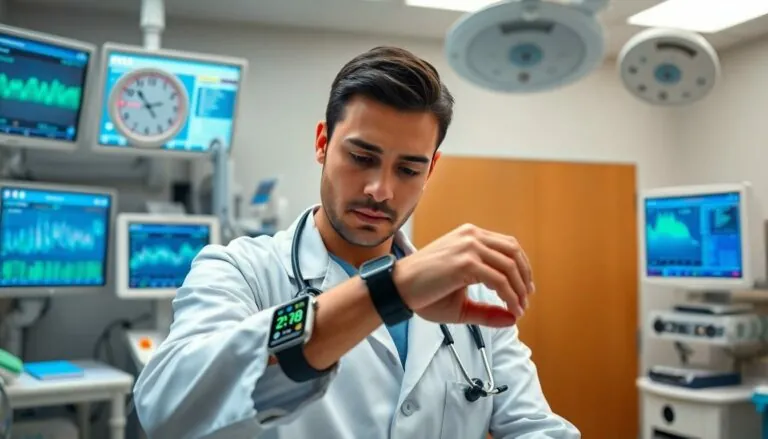Table of Contents
ToggleWhen most people think of the space race, they picture astronauts in bulky suits floating around in zero gravity or the iconic moon landing. But what if they knew that the thrill of that cosmic competition still influences their daily lives? That’s right! The technology developed during those heady days of space exploration has trickled down to Earth, transforming everything from how they communicate to how they cook.
Overview of Aerospace Technology
Aerospace technology encompasses a variety of innovations that emerged during the space race. Developments in materials science introduced lightweight and durable materials, which are integral in both aviation and automotive industries. Vacuum technology and insulation methods originally designed for spacecraft now enhance energy efficiency in homes and offices.
Satellite technology transformed communication. Innovations in satellite systems enable global positioning and navigation, impacting everything from driving directions to delivery logistics. Telecommunications improved remarkably, with satellite networks allowing for instant worldwide communication.
Advancements in computer technology played a significant role in aerospace. The rapid processing capabilities developed for spacecraft navigation systems are now standard in personal computing devices. These technologies power smartphones and personal computers, making everyday tasks easier.
Medical technology also benefited from aerospace innovation. Imaging technologies, such as MRI and CT scans, were influenced by aerospace engineering principles. Health monitoring devices, including fitness trackers, derive insights from techniques used in spacecraft technology.
Transportation safety significantly improved thanks to aerospace research. Aerodynamics study has enhanced vehicle design, resulting in safer cars. Innovations in safety systems, like anti-lock braking systems (ABS), trace back to aerospace research, ensuring higher safety standards for the general public.
The reach of aerospace technology extends into various industries, demonstrating its pervasive influence on daily life. New materials, communication systems, computing advancements, medical imaging, and safety enhancements exemplify its contribution to improved living standards.
The Space Race: A Brief History

The space race marked a pivotal moment in technological advancement. Fueled by geopolitical rivalry, it spurred remarkable innovations that shape our lives today.
Key Milestones
The launch of Sputnik 1 in 1957 represented the first artificial satellite in orbit. Following that, America responded with Explorer 1 in 1958, initiating its own space exploration efforts. The first human in space, Yuri Gagarin, took a journey aboard Vostok 1 in 1961, showcasing Soviet advances. The iconic Apollo 11 mission in 1969 culminated in humans landing on the Moon, demonstrating unprecedented engineering capabilities. Various satellites launched during this period have since provided critical data for weather forecasting, telecommunications, and scientific research.
Major Players
The United States and the Soviet Union dominated the space race, each pushing the other to achieve groundbreaking feats. NASA emerged as a leader in space exploration, conducting various missions that included satellite launches and manned spaceflights. The Soviet Union’s space agency, a precursor to Roscosmos, developed the initial technologies that made early milestones possible. Companies like Boeing and Lockheed Martin also contributed significantly, producing spacecraft and launch vehicles that further extended humanity’s reach into space. These players laid the foundation for collaborations that continue in modern space exploration.
Lasting Innovations from the Space Race
Aerospace technology from the space race continues to shape everyday life significantly. Several innovations from that era enhance modern conveniences and improve living standards.
Satellite Technology
Satellite technology revolutionized communication. GPS systems streamline navigation, impacting driving, travel, and logistics. Many individuals rely on satellites daily, whether for accessing weather updates, streaming services, or ensuring precise deliveries. Enhanced digital connectivity links people globally, forward-thinking mobile applications enrich personal and professional communication. This technology, initially developed for military and space applications, now provides critical support across various sectors.
Advances in Materials Science
Materials science breakthroughs emerged during the space race. Lightweight, durable materials originally designed for spacecraft enhance both aviation and automotive industries. Enhanced composites resist wear and improve performance, enabling manufacturers to build safer, more efficient vehicles. Innovations in thermal insulation and other materials contribute to energy efficiency in homes and offices. Everyday devices benefit significantly from these advancements, enhancing both usability and safety while promoting a sustainable approach to production. These materials showcase the far-reaching effects of aerospace technology and influence numerous industries.
Everyday Applications of Aerospace Technology
Aerospace technology from the space race influences the daily lives of Americans in various remarkable ways.
Communication Systems
Satellite technology revolutionizes communication. Global positioning systems enhance navigation, guiding drivers on the road. Individuals rely on satellites for accurate weather forecasts and streaming services. High-speed internet access owes its efficiency to advancements in satellite communications. Businesses increasingly depend on this technology for logistics and deliveries, demonstrating its critical role in modern society. Innovations from the space race continue to shape how people connect and share information daily.
Medical Technologies
Medical advancements emerge from aerospace engineering principles. Imaging technologies like MRI and CT scans incorporate methods originally designed for spacecraft. Medical devices, including fitness trackers, utilize insights gained from aerospace research. Patients benefit from more precise diagnostics and health monitoring, enhancing overall well-being. Telemedicine, supported by aerospace technologies, improves access to healthcare, especially in rural areas. These developments demonstrate a profound impact on medical practices, improving health outcomes for many.
Transportation and Safety
Transportation safety has significantly improved due to aerospace research. Aerodynamic advancements contribute to safer vehicle designs, while anti-lock braking systems prevent skidding. The integration of aerospace technologies in vehicle safety features reduces accidents, protecting drivers and passengers alike. Additionally, materials developed for spacecraft enhance overall vehicle durability. These innovations create a direct link between the aerospace sector and everyday transportation, making roads safer for everyone.
Future Implications of Aerospace Technology
Aerospace technology holds significant promise for future advancements across numerous sectors. Innovations in satellite systems could further enhance communication networks, leading to faster internet speeds and more reliable services. Increased bandwidth from satellites might support emerging technologies such as 5G and the Internet of Things.
Navigation systems may become even more precise as advancements continue in satellite-based positioning. This precision could facilitate autonomous vehicles, making transportation safer and more efficient. Enhanced navigation features will likely streamline logistics processes, reducing delivery times drastically for various industries.
Healthcare is poised for further transformation through aerospace-derived technologies. Wearable health monitoring devices may evolve into sophisticated tools that utilize advanced satellite communication. Such progress could enhance telemedicine, offering timely access to specialists and improving patient outcomes.
Material innovations from the aerospace sector will continue to influence everyday products. Developments in lightweight, durable materials can lead to more efficient transportation and energy use. Expect to see these materials in consumer products, enhancing performance while minimizing environmental impact.
Energy efficiency stands to benefit from aerospace advancements in thermal insulation and energy conservation. Residential and commercial buildings may introduce enhanced insulation technologies, lowering energy consumption and costs. These innovations contribute to climate change mitigation efforts and promote sustainability.
Safety improvements from aerospace research will ensure transportation systems remain robust. Continuous integration of aerospace technology in automotive safety features can lead to fewer accidents and improved vehicle resilience. Enhanced safety measures will ultimately protect lives and maintain public trust in transportation systems.
The legacy of the space race continues to shape daily life in America in profound ways. Innovations born from this era have seamlessly integrated into everyday activities enhancing convenience safety and health. From the satellites that provide real-time navigation to the medical technologies that improve healthcare access these advancements demonstrate the far-reaching benefits of aerospace technology.
As society moves forward the ongoing evolution of these technologies promises even greater improvements in communication transportation and overall quality of life. The space race was not just about reaching the stars; it laid the groundwork for a future where aerospace innovations remain a vital part of daily existence. Embracing this legacy will ensure that the benefits of the past continue to enrich lives today and in the years to come.







